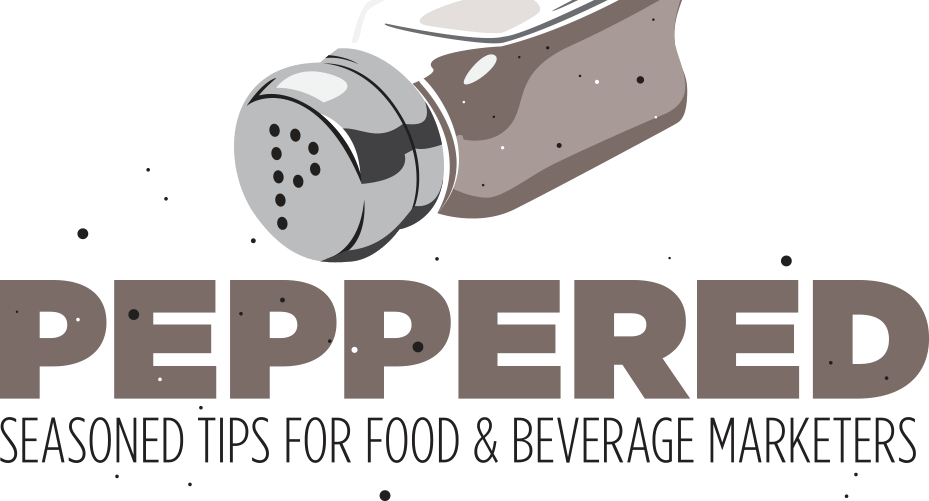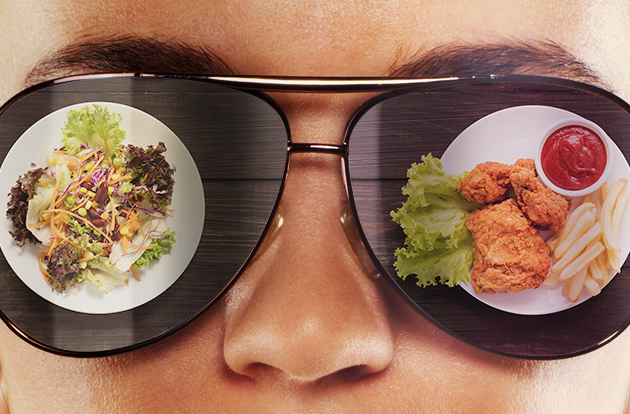As food marketers, we keep hearing it over and over again… “Consumers are looking for healthier eating options” – especially Millennials. In fact, according to the polls, 80% of people are “trying to eat healthier.”1 (As Yoda said, “Do or do not. There is no try.”) Meanwhile, everyone in the food industry is searching for the “Holy Grail” of healthy, nutritious, minimally processed and convenient. Oh, and it has to taste good too. But wait… in the real world, the relative significance of all of those factors is literally the difference between success and failure.
As a food manufacturer (and marketer) it’s easy and exciting to get swept up in the healthy food revolution that everyone is talking about. But before you go reformulating all of your products to be low-fat, gluten-free, non-GMO, low-sugar shadows of themselves, consider the famous quote by Margaret Mead, “What people say, what people do, and what they say they do are entirely different things.”2 As a recent poll by The New York Times found, 71 percent of the public thinks granola bars are healthy, while only 28 percent of the hundreds of nutritionists surveyed agreed with that assessment.3
Consumers always do the right thing, as long as there’s no sacrifice.
Consider also the fickleness of the American consumer. Millennials are very concerned about the environment, right? So much so that if the world’s largest snack food company developed a chip bag that was 100% biodegradable, at no additional consumer cost, that would be a slam dunk winner. It’s a no-brainer. Unless of course the bag crinkled too loudly. And then it would be horrible failure, plunging sales of Sun Chips® downwards by 11%.4 Of course at that point, Pepsico® was stuck between the rock of poor sales and the hard place of looking like they don’t care about the environment. Their only option was to double-down on R&D until they made everything about the bag exactly as convenient, cost-effective, and only as moderately noisy as all of the other chip bags on the market.
For a culture that is increasingly concerned (and rightfully so) with obesity, diabetes, and other food related/caused health issues, the simple truth is that most of the time, taste still trumps everything.
As evidence:
- 73% of Americans seek out foods labeled “all natural” without understanding that there is no FDA definition for that label.5
- Burger King’s® Satisfries® (30% fewer calories, 40% less fat, and 19% more expensive than their regular fries) failed after less than a year.6
- McDonald’s® salads are only 2-3% of overall sales. (Compared to Dollar Menu® items that comprise 14% of sales).7
- What’s been one of the most successful Fast Food products in recent years? Wendy’s® Pretzel Bacon Cheeseburger.8
Beware the middle ground.
That’s not to say that healthy products fail (many are wildly successful). Or that consumer trends aren’t shifting (they absolutely are). About half of IRI’s Pacesetter® Food & Beverage products are better-for-you, including DairyPure® Milk, Oreo® Thins®, Oscar Mayer® Natural and Sargento® Balanced Breaks®.9 But the other half are decidedly indulgent, including multiple SKUs of alcoholic soda, ultra-loaded, indulgent Screamin’ Sicilian® frozen pizza and sugar-laden sports and energy drinks. This dichotomy is also reflected in IRI’s “Rising Star” categories, where Cracker Barrel® Mac & Cheese, Devour® decadent frozen entrées and Mountain Dew® Pitch Black® share the spotlight with Chobani® drinkable yogurt, Good THiNS®, and SmartMade® Frozen Meals.9
So what’s a marketer to do?
- First and foremost, work with outside experts. Rely on your agency and real research to separate pipe dreams from reality. When engaging in innovation, branding and marketing, work with a team that has food and beverage experience (it really is a different animal than any other CPG).
- Taste still trumps everything. If your potential healthier product looks like medicine, you’re fighting an uphill battle.
- Keep your health claims in perspective. No matter how you spin it, “healthier” still usually translates into “sacrificed taste.” Consumers are often willing to happily accept this trade-off. (Robust Halo Top® sales are a perfect example of this.) But if your product happens to be gluten-free just because of the nature of it (BBQ ribs or salad dressing, for example) screaming “gluten-free” above your brand also screams “tastes like diet food.”
- Don’t drink too much of your own Kool-Aid®. Consumers (especially Millennials) are cynical. And we’ve all been lied to many, many times before about how great the latest healthy product is.
- Recognize that sometimes consumers are looking for healthy alternatives. But most of the time, they just want something that really, really tastes delicious (it’s literally hard-wired into us).
- Some consumers truly care about what they eat and don’t “try” to eat healthier, they “do.” (One of my Millennial colleagues “cheated terribly” last weekend; she had a slice of pizza.) But it’s a continuum — many consumers are looking to literally have their cake and eat it too. In fact, they’re just looking to reduce the guilt factor without actually changing their lifestyle. A prime example of this is the increasingly blurry line between many “protein bars” and “candy bars.” In some cases, the only difference is the positioning, branding, and guilt-level associated with them.
- Recognize that any new product launch requires marketing support (dollars) to survive.
- Keep in mind that this trend and consumer perceptions and desires is a constantly moving target (see #1 again).
1 — Mintel, Healthy Lifestyles US 2015
2 — https://en.wikipedia.org/wiki/Margaret_Mead
3 — NY Times, 7/5/2016
4 — Greenbiz.com, 3/18/2014
5 — Consumer Reports, 5/10/2016
6 — Money Magazine Online, 8/14/2016
7 — Money Magazine Online, 4/22/2016
8 — Nation’s Restaurant News, 7/18/2014
9 — IRI New Product Pacesetters, 4/2017






